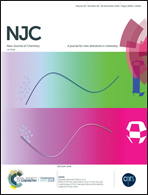Rich N/O/S co-doped porous carbon with a high surface area from silkworm cocoons for superior supercapacitors†
Abstract
High surface area and heteroatom doping are crucial factors for porous carbon when it is used in supercapacitors. However, it still remains a huge challenge to integrate high surface area and rich heteroatoms into one material. Herein, we develop new type of N, O and S co-doped porous carbon with a highly porous structure derived from silkworm cocoons via facile carbonization and copper chloride activation. The silkworm cocoon-derived porous carbon (SC-PC) possesses both a high specific surface area (2826 m2 g−1) and a rich heteroatom weight percentage up to 21.9 wt%, including N (7.3 wt%), O (13.0 wt%) and S (1.6 wt%). Benefiting from the synergistic effects of the high surface area contributing to a large amount of ion absorption and rich heteroatom doping improving the pseudocapacitance, the SC-PC electrode displays a high specific capacitance of 435 F g−1 at 0.5 A g−1 and an excellent capacitance retention of 93.4% after 10 000 cycles in a 6 M KOH electrolyte. Moreover, the symmetric supercapacitors can deliver a high energy density of 23.0 W h kg−1 using 1 M Na2SO4 aqueous solution, demonstrating that SC-PC developed here is promising for application in supercapacitors.



 Please wait while we load your content...
Please wait while we load your content...